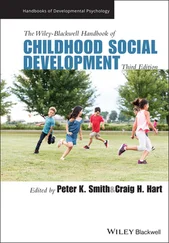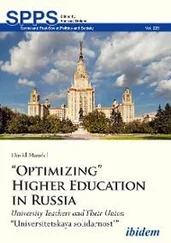1 Curricular: This includes academic activities mainly related to various components of the courses offered in the program, such as tests, assignments, examinations, and other direct assessment.
2 Co‐curricular: The activities which are associated with various courses as supportive components such as seminars, group discussions, project based events etc.
3 Extracurricular: This is completely beyond curriculum and plays very important role in developing a set of skills in students, namely sports, various competitions etc. Case studies and survey on certain relevant topics also enable the students for developing unique qualities through these extra‐curricular activities.
These activities are not uncommon and can be seen being practiced everywhere, but the ways in which they are carried out or performed actually determine the SLOs in the students. For the approaches that can be truly assessed through direct or indirect feedback or mechanisms it can be claimed that the outcome in the students through such activities has been truly inculcated. So, mapping that reflects the change in students is of great importance whether this has been part of assessment of the activities, academic, research, co‐curricular, etc. Let us look at some pragmatic approaches that were used while assessing the SLO in the students, with the help of the delivery and assessment of two courses – Signals and Systems (ECE 3X20) and Image Processing (CSE 5X08). These two courses are among the many that were delivered by Sinha (one of the authors of this paper), and they are briefly discussed here to show a few of the pragmatics and unique methods of evaluating SLOs.
3.2.1 Specific Outcomes in ECE 3X20
A course, on Signals and Systems (ECE 3X20) was delivered to second year Engineering students in a BE (Hons) program that was offered to two streams Electronics and Communication Engineering () Students and Computer Science and Engineering (CSE) students. The number of students who registered for this course was 120 and the course was common for both CSE and ECE students. The assessment included the following main components:
1 Tests (Test‐1, Test‐2, Test‐3, mid‐term and comprehensive examinations [CEs]): The number of tests was kept to three in the subject being discussed here. However, that number can be changed, depending on the course being assesses. The mid‐term examination is conducted in the middle of the semester and the comprehensive one is done at the end of the semester.
2 Group assignment (different approach).
3 Question‐answering and a response during the lectures.
In normal tests, listed in (1) above, the practices were not very uncommon. Of course, the questions were set in such a manner to cater for all the objectives stated in the subject's course plan. The response was evaluated in each of the answer book how the answer could fulfill a particular objective which further means what outcome was attained by the student. Table 3.1shows a brief outline of the attributes which were seriously observed. This exercise was extensive and done for all the students.
Table 3.1 Assessment and mapping of questions and their responses of tests.
| Question number |
Objectives |
Outcomes |
Mapping |
| 1 |
Student Learning Objective (SL)‐SL1 |
SLO1 |
Excellent attainment (EA) |
| SL2 |
Average attainment (AA) |
| SL3 |
SLO2 |
AA |
| 2 |
SL2 |
SLO1 |
EA |
| SL3 |
| 3 |
SL1 |
SLO1 |
AA |
| SL3 |
The attainment was seen and evaluated on the basis of the quality of responses and thought process involved while answering the questions by the students. In addition, we also tried to see how the SLOs are contributing to the POs of the program in the department. In the OBE framework, the POs are important components of the vision and mission of any institute. The hierarchy is as follows:
Vision of the university or department
Mission of the program
Program objectives (POBs)
POs
COs
The COs are derived from POs and, therefore, can have multiple SLOs. The COs are expressed as CO= {CO1, CO2,….} = {SLO1, SLO2, …}, meaning that a CO is a set of many COs and many SLOs. These outcomes are derived from the vision, mission, SRGs and LRGs. The next component is a group assignment that played the most important role among all three evaluation components. The description of the group assignment is briefly as follows:
Each group (in our case, a pair) of students was assigned a topic to be worked. The group had one student each from CSE and ECE. The topics were problem‐based, such as: “Why is a Fourier transform used in signal processing?”; “Give examples of five discrete signals that you see in your university and explain how the signals contribute in the system.”
The group had to study the topic thoroughly and understand the necessary concept and its significance.
Then, the understanding of the topic had to be demonstrated in the form of a short PowerPoint presentation, preferably with no more than 15 slides.
The students had to present this and record it as a video. A copy of the presentation and the video had to be submitted.
Students were also given the option to present the topic directly via Skype.
Next the specific observations made during the evaluation were reported, as listed here:
The students were apprehensive while the task was being assigned. The students seemed to lack both confidence and teamwork.
The students were not at all prepared to undertake a Skype presentation. Only two teams of the 55 teams agreed to present this way.
Generally, inside the classes while the course was being conducted, students were not very confident in responding to the queries or about having active interaction with the faculty.
The next stage was the evaluation of the students for the task just described. For the recorded presentation, the specific outcomes were observed as shown in Table 3.2.
Table 3.2 Specific SLOs for the recorded version of response to the assignment.
| SLOs |
Number of students performing at different levels |
| Average |
Excellent |
Outstanding |
Not exhibited |
| Fundamental/conceptual knowledge of the topic |
52 |
32 |
21 |
15 |
| Communication/presentation skill |
56 |
41 |
19 |
04 |
| Knowledge of mathematical concepts used |
41 |
34 |
23 |
22 |
| Critical thinking |
23 |
16 |
12 |
69 |
Aa can be seen in Table 3.2, students exhibited a few important outcomes in good number. The students who demonstrated critical thinking were smallest in number and those who performed excellently in demonstrating communication skill and conceptual knowledge are very good in number. The observation required a lot of time and participation by the faculty. An interesting and noteworthy point was that the SLOs were measurable and observable in better ways compared with conventional tests and assessment components. Moreover, a significant change was reported in the four students of the two teams who agreed to present the topic via Skype. The important and positive changes that were measurable in the students were:
The two students who had never been active and responsive inside the class, did very well. The reason for this performance includes encouragement, an opportunity to work something in team, active participation, responsibility for making the topic understandable, etc. The ways the students presented the topic, with a lot of research studies, using their references, and explaining properly, were wonderful.
Читать дальше












